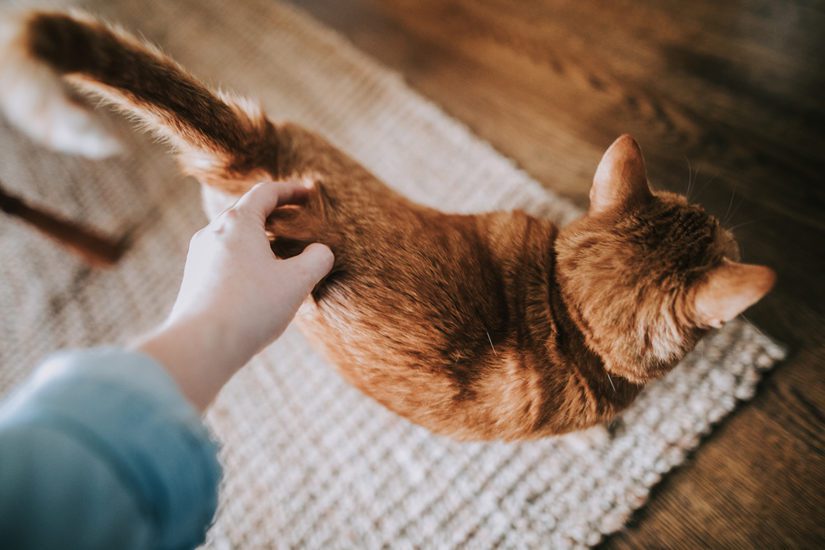Question: My cat comes to me for attention but then, all of a sudden, she bites and sinks her claws into me while I’m petting her. Why?
Many cats exhibit what behaviourists call “petting-induced aggression,” an instinctive reaction to something they find unpleasant, even painful. Compared to dogs, cats are generally less tolerant of petting. When, where and how long cats can be touched before they become overstimulated vary from cat to cat. When their sensitivity threshold is reached, they react similarly to when experiencing pain, almost like a reflex. For some, it takes only seconds, while for others, a few minutes.

So what can you do to avoid being bitten or scratched? Pay close attention to your cat’s body language. Signals include flattened ears, tail twitching, rippling skin and low growling. She may also start to fidget or tense up or move away from you. If you see these behaviours, stop petting her right away! That way, you will stay below her sensitivity threshold. Wait to stroke your cat until she solicits petting again by rubbing against you.
When you pet your cat, use short, small strokes on favourite scratching spots. Start with her cheeks, then her chin and between her ears and eyes – areas where cats typically groom each other. Avoid touching near her tail, back legs or stomach. Again, by watching your cat’s behaviour, you can find out which parts of her body are less sensitive to prolonged petting. Be aware that she may only tolerate being petted in a specific location in the house, at certain times of the day or during specific activities such as feeding but not while resting.
Should petting-induced aggression suddenly develop, have your cat checked by a veterinarian. The pain from arthritis or dental disease, for example, can make cats more sensitive to touch. Your cat’s emotional state can also play a role. If she is feeling stressed from a change in her environment such as a new baby or a recent move, her threshold to touch may be lowered.
Above all, never forcibly pet your cat by restraining her or punish her – physically or verbally – for showing aggression during petting. Doing so will only cause her to be anxious about petting and further lower her sensitivity threshold. Remember, your cat may never tolerate much petting, but with patience, the two of you can find a happy medium. Don’t hesitate to reach out to a BC SPCA recommended AnimalKind trainer to help with behaviour modification for your cat. Watch the video below for more tips:
To understand more about petting aggression, download Petting aggression when it comes to petting, not all cats are created equal (PDF).
For more tips on cat care and behaviour, check out our cat pet care section.
Get updates from the BC SPCA
Want to receive more pet tips like this, right in your inbox? Use the form below to subscribe for updates.
